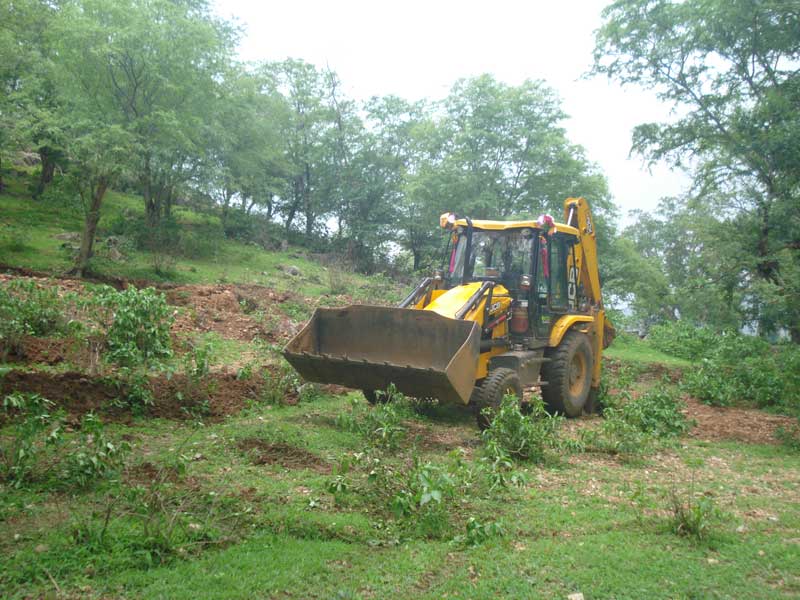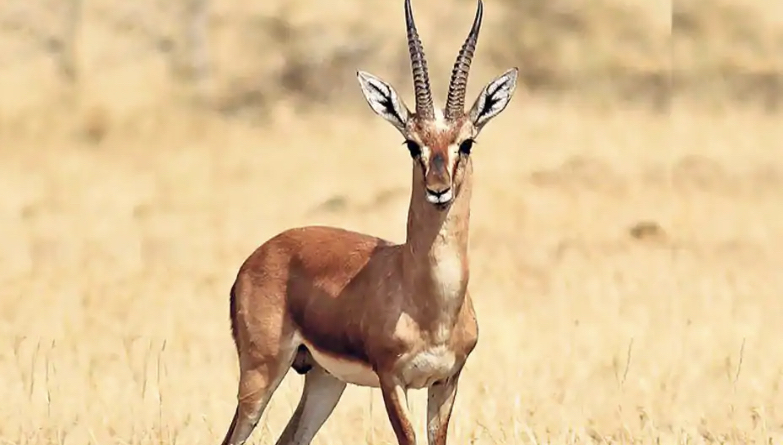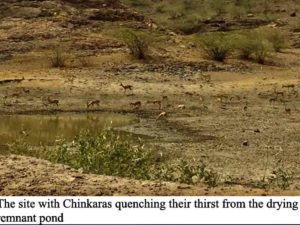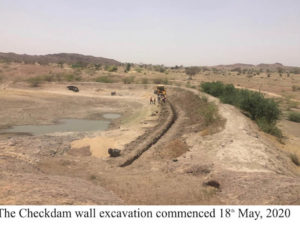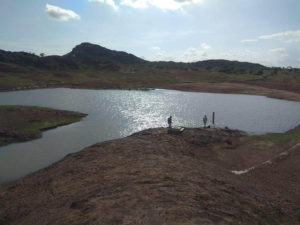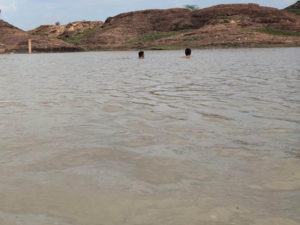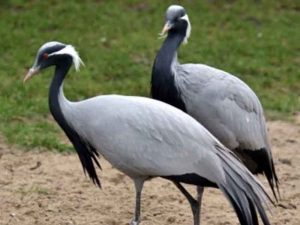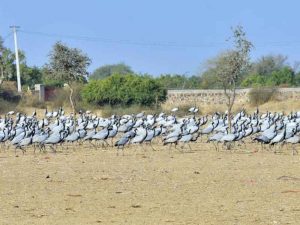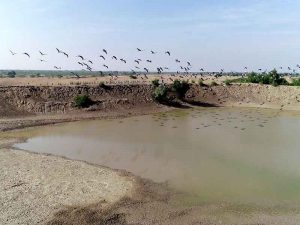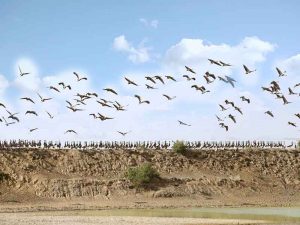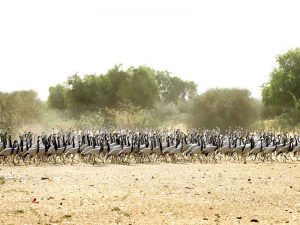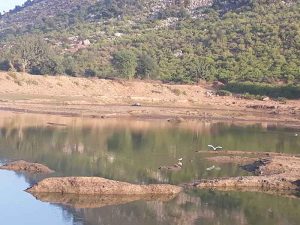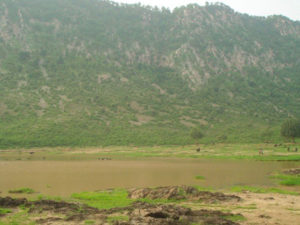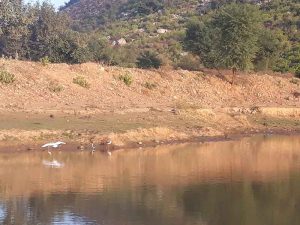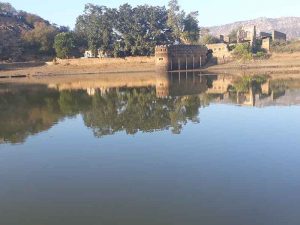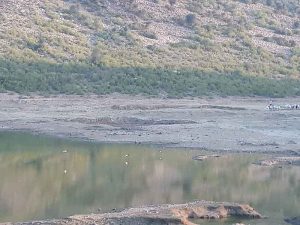ENVIRONMENT
India is facing growing environmental challenges – from water scarcity and forest loss to rising temperatures and shrinking wildlife habitats. By 2030, half the country’s population is expected to live in urban areas, placing immense pressure on natural resources, especially in already vulnerable regions like Rajasthan.
Although India has just 4% of the worlds fresh water, it must meet the needs of 1.4 billion people. Nearly 600 million face water stress, and more than 80% of the population lives in areas highly susceptible to extreme weather. Without urgent action, an estimated 148 million people could be at severe risk from climate impacts by 2050.
At the Brij Foundation, we are working to protect the environment one ecosystem at a time. Through projects that restore ancient water bodies, build rain-fed reservoirs, protect wild life habitats, and reforest degraded land, we aim to create lasting impact for both people and planet.
Ratanada Black Buck Sanctuary, Distt. Jodhpur
The unavailability of water takes a heavy toll on the health and numbers of faunal populations in the harsh Thar Desert terrain. Brij Foundation in partnership with INTACH has undertaken the development of 16 water holes for wildlife in the desert districts [Barmer, Bikaner, Jodhpur, Jaisalmer] of Rajasthan over the last 4 years.
An ongoing effort since last year is the creation of a black buck habitat at Ratanada where villagers have made available 7 hectares of land for the project. The work involved planting of grasses, replacing kikar with native vegetation and the creation of water holes in consonance with the slopes.
Over the year a healthy population of black bucks [70 odd] and chinkaras [120 odd] has moved in. Given the reasonable availability of resources breeding has taken place as evidenced by the sightings of junior fawns. Desert foxes, too, have come in.
The efforts will continue for another 4 years to ensure the stability of the system. The desert landforms are being changed with infrastructural interventions affecting the wildlife and ecological processes. This is our modest effort to ensure that our non-human family stays around.
Restoration of Banera Talab, an ancient water body in Jodhpur
In the desert of Rajasthan, water is of supreme importance to both humans and animals. Brij Foundation has helped to restore several small water bodies last year in this parched state. This year Brij Foundation in partnership with INTACH, focused on a bigger project to provide drinking water to a larger number of wildlife. The Banera talab in Village Dugar is 37 kilometers west of Jodhpur and plays host to a large number of the Indian Gazelle(chinkara). This talab used to dry out every year even before summer began. A check dam wall, was constructed by us and the talab now holds 3 times the water than it could earlier. To prevent soil erosion, native trees were planted in the hills surrounding the talab. The chinkara which is also the state animal of Rajasthan, eats Sevan grass [Lazarus indicus] for sustenance. This grass will also be cultivated in the area around the talab for the chinkaras to graze on. This project impacted and improved the lives of the local communities by providing much needed employment in these hard Covid times. The restored Banera talab is now able to quench the thirst of lakhs of wild animals, livestock and migratory birds.
Creating Rain-fed water bodies in the Thar Desert
Creating rain-fed water bodies in the Thar is a low cost high return environmental venture. At Malajal, Tilwara, Rajasthan, Brij Foundation along with others helped to enlarge a tiny Johar into a fairly large one. This year’s rains were kind and the water body is playing host to 4000 Demoiselle Cranes which have flown in along the Central Asian Flyway, all the way from China and Mongolia, crossing the Himalayas at heights of upto 26,000 ft. to spend the winters here. A network of such habitats can help the kurjaas as the cranes are locally called.

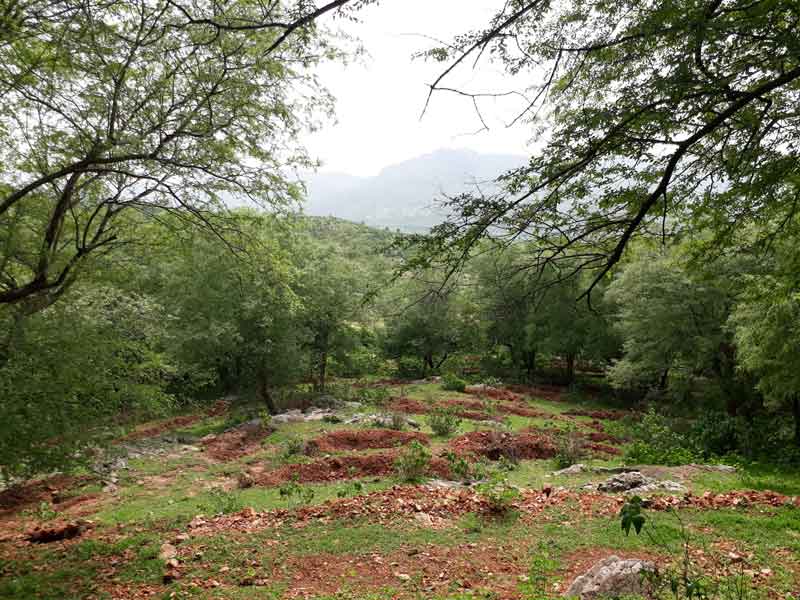
Catchment Treatment of Water Harvesting Device in Bhaktapur, Rajasthan
Brij Foundation is also improving the catchment surfaces on the surrounding hillocks by carving out contour trenching and planting 300 saplings of indigenous species. Tree planting and contour trenching in the catchment zone also serve as extension of existing Oran (community forest) and a source of pasturage for animals (domestic as well as wildlife) in the vicinity of existing Talab.
Renovation of Water Harvesting Device
Water harvesting at the community level sustains life in arid regions. The seasonal rainfall has to be stored so as to last for the rest of the year.This water source is very important for communities in terms of providing water for their livestock, wild animals and irrigation. Brij Foundation has supported KRAPAVIS to carry out renovation of a derelict historical check dam structure at Bhaktapur, Distt. Alwar during the summer of 2018.The traditional water-harvesting technique was used in conjunction with modern scientific expertise (i.e. the watershed approach) to rehabilitate or recreate the water storage structure, known as ‘Talab’, thereby providing an optimal solution for water dispersion in degraded lands. This talab would benefit 900 people in the village of Bhaktapur as well as 250 livestock.
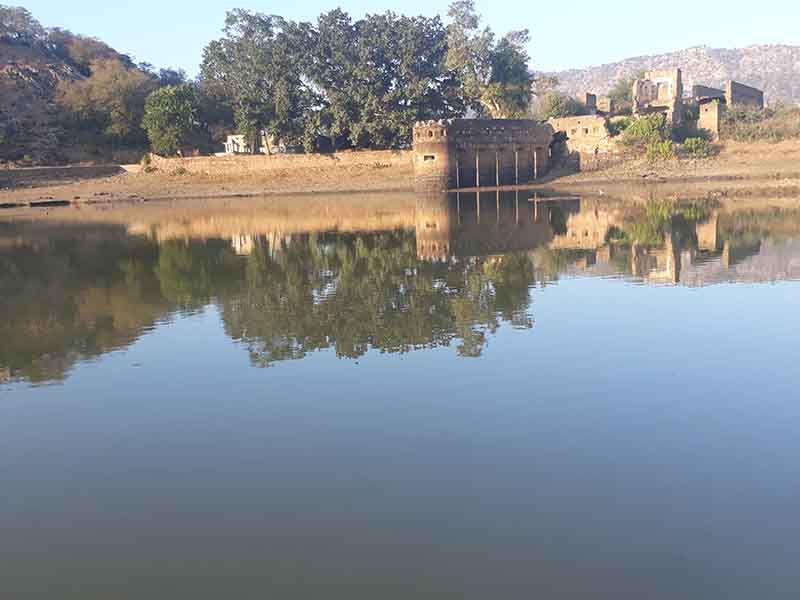

Watering hole for Chinkara Deer
The Chinkaras are a small deer [ranked in the vulnerable category] inhabiting the desert districts of western India. With the passage of winter their watering holes dry out in the arid landscape and they turn to sources in the village for quenching their thirst. Here, they are caught by the village dogs and succumb to their injuries in the thousands every year.
To avert the situation Brij Foundation proposes to make a series of water holes near their habitats obviating their need to come to the villages. A pilot watering hole [check dam] has been created at Malajal, Distt. Barmer. This will hold water for more than a year serving the chinkaras well into the next monsoon. Brij Foundation proposes to construct several such watering holes @ an average cost of Rs. 2-4 lakhs each. We look forward to your help.
Forestation
India has been losing forest cover to urbanization, infrastructure and agriculture. Forests pull the moisture bearing monsoon winds inland and are also responsible for secondary rounds of rainfall through tran-evaporation process. Thus planting scattered trees is hardly as effective as tree communities acting together in a forest cluster. Forests, typically, take decades to mature. The need of the moment is to have accelerated growth of forests.
Brij Foundation is supporting a pilot project at Sainik Farms on the outskirts of Delhi where the Miyawaki method of growing forests rapidly would be applied. The process and results would be documented over next 5 years.
